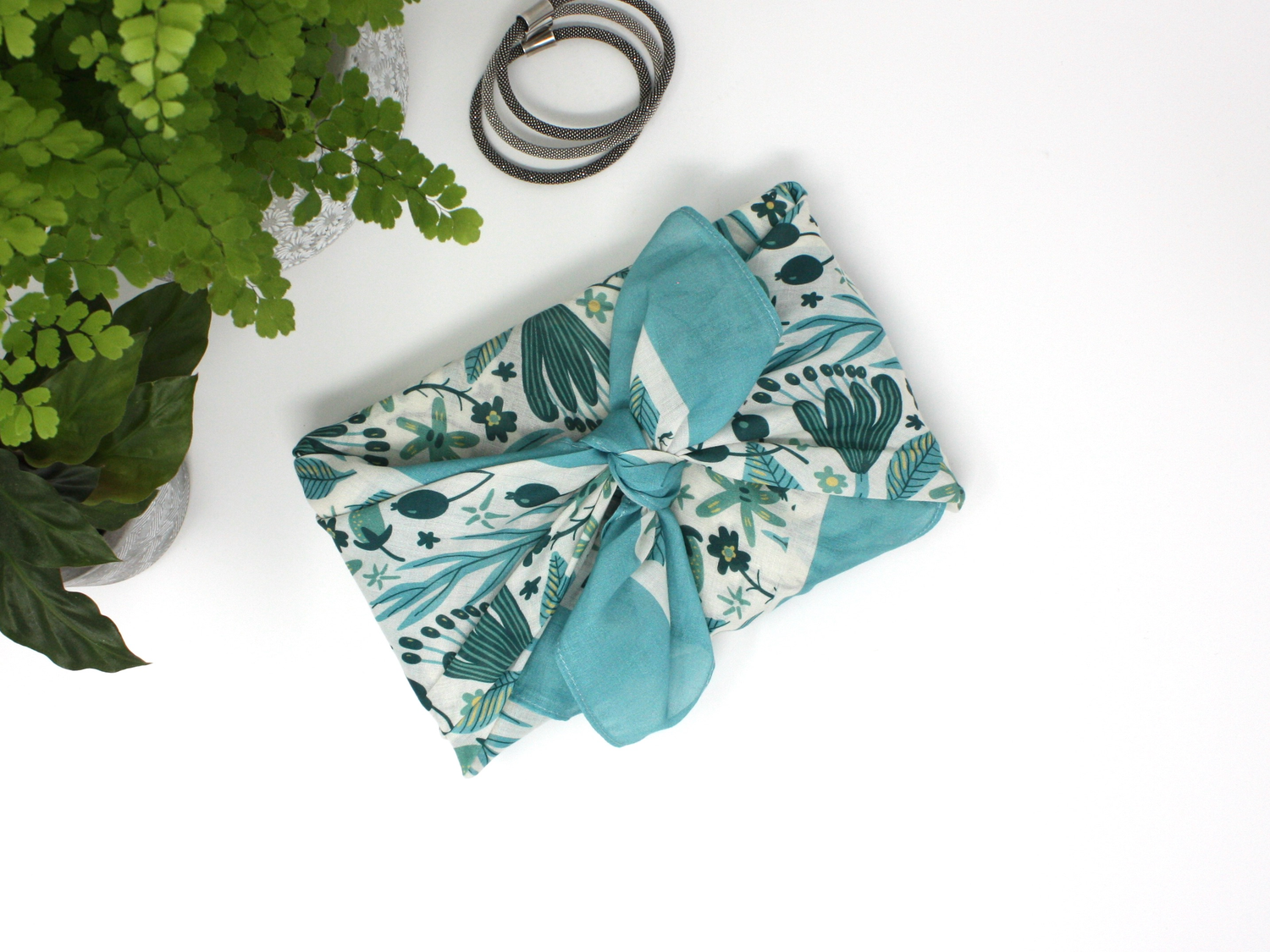Textiles are responsible for a huge 10% of the world’s greenhouse gas emissions; they’re all around us; clothes, cushions, bedding, upholstery, furoshiki.
So, are those environmental claims you see all they promise? How do you choose sustainable clothes? What is the best fabric? What's the secret to keeping clothes looking like new?
The global fashion industry is worth a stagging £1.2 trillion each year
Read on for the full lowdown, but first a short reminisce…
A few years ago, I visited London fashion week and was speaking to a designer between shows.
“Do you have enough clothes?” he asked. Of course not. I’d stared into my wardrobe uninspired and underwhelmed only that morning (I mean, London Fashion Week! You can hardly turn up wearing a bin bag, can you). Then he put the question a different way “If it didn’t matter at ALL what you looked like, if you could wear torn, threadbare clothes, patch, repair….do you have enough clothes to last you a lifetime?”. Probably.
The designer was one who focused on upcycling pre-used fabrics. I wish I could remember his name, sadly it’s lost to me, but his questions and point have stayed.
The fashion industry is worth a staggering £1.2 trillion annually. It’s an industry that feeds itself on selling us new; discarding perfectly ‘good’ clothing because the collar isn’t this season’s shape, the pattern’s a little dated, or the hem’s the wrong length.
Now we all live in the real world and to most of us it matters what we look like - we need to turn up to work looking smart. We want to look good meeting friends. And we love a new dress in which to dazzle on occasions.
How to choose sustainable fashion?
Since 1975, the global production of textile fibres has almost tripled, with new clothing collections produced ever faster, at ever lower prices, encouraging shoppers to buy and replace.

Crucial to being sustainable is being mindful about how much we buy, and making what we do buy last.
Charity shops, vintage stores or outfit hire are gaining traction, nowadays second hand is a thing to be proud of “oh this, yes, I found it in a charity shop for a tenner, can you believe it!”. There are some great influencers on social if you’re looking for second hand inspiration; check out #secondhandfashion and #thriftedfashion.
But if you’re looking to buy new clothes, buying less is THE most important way you can make your wardrobe sustainable.
Buying new ‘sustainable’ branded clothes, but wearing them just a couple of times simply doesn’t cut the mustard.
Marketing shouts such as 'conscious collection', ‘made locally’, ‘organic’, ‘made from recycled fabric’ may sound green, but a recent survey by the CMA found that 59% of fashion environmental claims were false, misleading or unsubstantiated, so treat with a healthy dose of scepticism.
If you’re buying a pair of jeans, it’s taken land and water to grow the cotton, a textiles mill to clean, weave into fabric; dyes to be used and disposed, pattern to be cut, leaving offcuts scraps, transport. Yes, sustainable processes can help reduce the water, energy, waste and miles, but it’s a reduction, not a removal.
5 questions to ask yourself before you part with your cash:
1. Is it good quality? Is it well sewn, does the fabric feel good? If you’ve bought from a brand before and it’s quickly bobbled, shrunk, ripped at the seams, their quality specs and standards simply aren’t good enough. It’ll be a lucky dip what you get next time too. Avoid.
2. Will you use it 30 times? Is it versatile? Could you envisage wearing that top with jeans and trainers for shopping? Or with a blazer and boots for lunch? Some smart wide legged trousers for work? Consider trying Japanese furoshiki; multifunctional squares of fabric which can be used as scarves, hair accessories, tied into bags, or even used to wrap gifts.
3. Will it date? Think Parisian style and invest in timeless classics in neutral colours - a trench coat, well fitting jeans, a little black dress - items that suit your body and look good on you. Steer away from 'of the minute' cuts and colours that will soon look like last year’s ill-advised trend.
4. Can you wear it for three seasons? Could you layer up that summer dress for cooler spring and autumn months? Or is the pattern just that bit too summery? The fabric a little too floaty?
5. Does it spark joy? Do you put it on and absolutely love everything about the way it looks, hangs and makes you feel? If so, it’ll be something you’re happy to rewear time and again. If not and there’s something niggling you, just pop it back on the rail and STEP AWAY! Don’t accept less than perfect.

What type of fabric is most sustainable?
There are 3 basic types of fabric:
- Natural
- Synthetic
- Cellulose
Natural fabrics
COTTON and LINEN from plants, WOOL and SILK from animals; they're simple to create and naturally biodegrade.
COTTON has been used for over 5000 years. Technology has moved on of course, GM (genetically modified) is common-place and whilst the thought of GM might make you shudder, in a world with finite resources and a growing population, science can help shoulder that burden. GM cotton was developed to provide higher yields and pest resistance, meaning less need to turn wild landscapes into yet more cotton fields, and less pesticide spraying.
Organic cotton meanwhile takes a totally different route, it doesn’t allow GM, and only natural pesticides and fertilisers can be used, keeping land healthy and fertile for future crops.

WOOL has fantastic insulation properties, think of those mountain sheep out in all seasons on exposed hills. Each year they regrow their warm fleece, the ultimate renewable. There are strong environmental reasons for using less animal products; sheep need lots of land and their (how do I put this politely?) 'digestive systems' are a surprisingly big contributor to greenhouse gases.
But in 2022, wool is a by-product of meat; and those sheep have to be shorn every year for their health. Demand for wool though has plummeted in recent years, due to cheaper synthetic fabrics, with farmers sometimes resorting to composting fleeces, a sad waste of what could be used as a valuable textile.
If you are buying wool keep a special eye out for the British Wool symbol which means it hasn’t travelled far.
Synthetic fabrics
Synthetic fabrics are artificially created from oil - they’re plastic - POLYESTER, NYLON, ACRYLIC, NEOPRENE and SPANDEX are all synthetic. First developed in the 1930’s synthetic materials have progressively become cheaper and mass produced. Some have useful properties such as quick drying, or stretchy which makes them ideal for sportswear, or tights.
But, and it's a big BUT each time they are washed they shed tens of thousands of microplastics, too small to be caught, down pipes and into the seas.
Neither will synthetic fabrics biodegrade. Once they are made, they’re here to stay.
RECYCLED POLYESTER is a bit of a buzz word in fashion at the moment. Polyester is made from a type of plastic called PET (polyethylene terephthalate), it’s also used for plastic bottles, so clothing brands just love to advertise ‘made from 50 plastic bottles’. Sounds great, but the reality isn’t quite so green. PET can be remade into drinks bottles several times, but once it’s been made into fabric it can’t be recycled again, only downcycled into wadding, insulation etc. If you were going to buy something polyester anyway, yes choose recycled, but don’t be fooled into thinking it’s super green.

Cellulose fabrics
These sit between natural and synthetic; wood pulp, bamboo, or other plants are intensive processed so they melt and form into yarn, imagine strands of spaghetti being pushed out of a pasta maker. Cellulose fabrics will biodegrade though, and don’t produce micro-plastics. But early types of cellulose fabrics like RAYON and VISCOSE use some pretty nasty chemicals in their creation.
LYOCELL is the latest generation of cellulose fabric and is often sold as an eco-fabric. It’s sometimes called TENCEL (a brand name, like Coke is to cola). It's processed much more sustainably than its cellulose predecessors. At the moment lyocell isn’t widely produced, and it’s costly, so a fully scaled, long-term impact hasn’t yet been seen, but it shows promise.
In summary, there is no perfect fabric, like any product created there’s an environmental impact, but choosing natural fabrics where you can, or lyocell (Tencel), will avoid microplastics and some of the harsher textile processes.
At KindlyYarn we use a premium cotton yarn with long fine fibres for our furoshiki wraps, this means that whilst they're soft and lightweight, they'll stay looking like new for years.

Love the clothes you have!
60% of the energy used in clothing is about how it’s cared for after its produced. Plus looking after your clothes will keep them looking like new for longer.
· Wash less - Washing gives fabric a battering. How would you feel after a cycle through the machine? If you want your clothes to stay soft, bobble free, in shape and their original colours, wash only when needed, not after every wear. An estimated 35% of ocean microplastics come from synthetic fabrics, so you’ll be washing less plastic down the drain too.
· Short & Cool - When you do wash a short, cool (20 or 30 degrees) cycle is best, not just for protecting the fabric, but also for the environment as it’ll use less water and less energy to heat.
· Line Dry - If washing is bad for your clothes, tumble drying is cataclysmic. The heat and the abrasion all serves to shrink, mis-shape and bobble clothes. Do not, I repeat DO NOT tumble dry anything you adore. Line drying saves your fabric and your energy bill.
· De-bobble - For about £15 you can pick up a fabric shaver. Personally, I’m bored to tears by ironing, but hand me that debobbler; seeing fabrics resurrected to new-like condition is actually a joy (just don’t tell young me).
· Repair - Learn some basic sewing techniques, replacing a button, sewing a seam, repairing a hem means those favourite items are free to see another glorious day.
· Visible mending – this is really popular right now, make a feature of that wear and tear with brightly coloured repairs and patches.
· Upcycle - Already learnt a few sewing techniques. Fantastic. Now up your game another level and learn to alter. Dress to tight at the top? Cut it down to a skirt. Frumpy blouse? Say hello to a new summer top.

So, there you have it. If you want to look a million dollars without costing the earth - treasure what you already own, try a little Japanese versatility, then add a dose French style by investing in good quality classics.
Au revoir!




